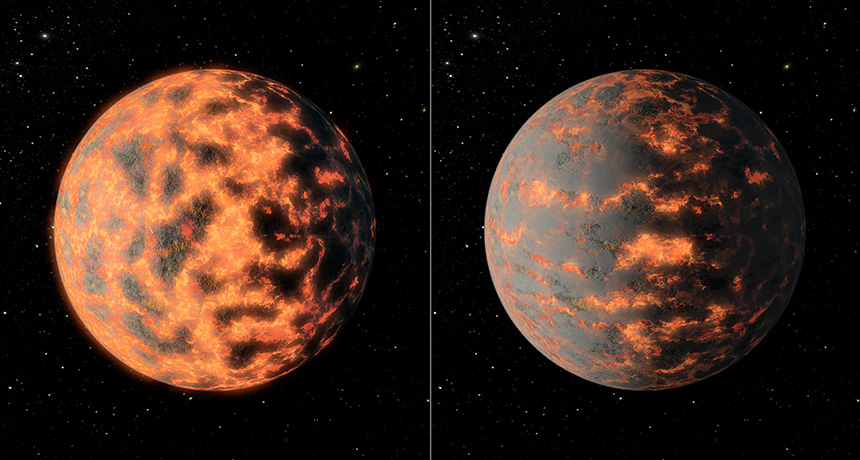Erupting volcanoes may cause exoplanet’s temperature extremes
Spitzer telescope observes fluctuations of more than 1,000 degrees

The partially molten surface of 55 Cancri e (left, illustrated) might periodically be blanketed by volcanic dust (right), which could explain observed temperature swings of over 1,000 degrees Celsius.